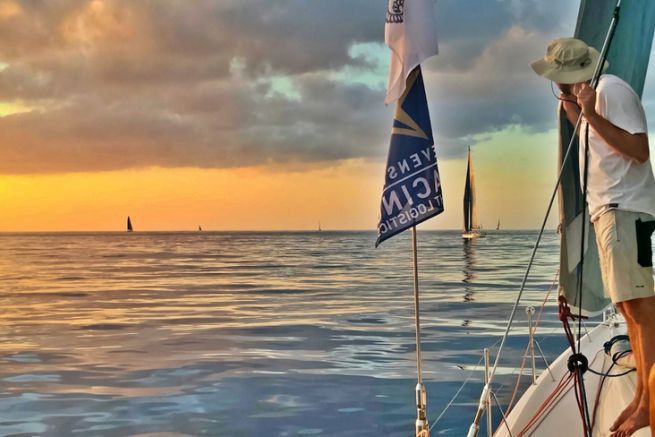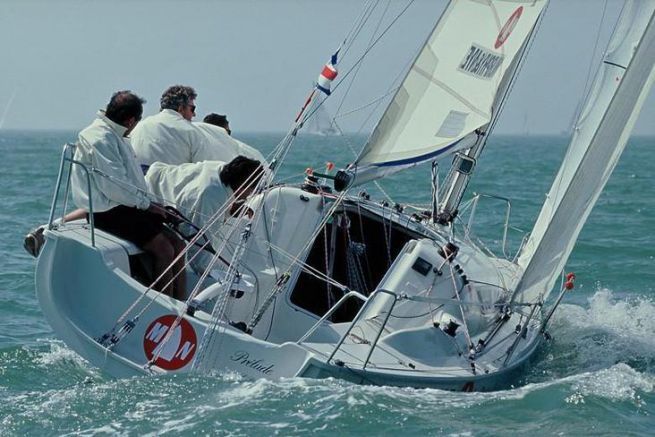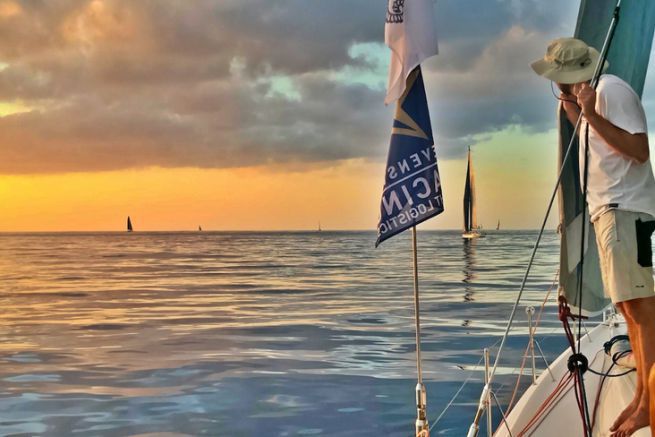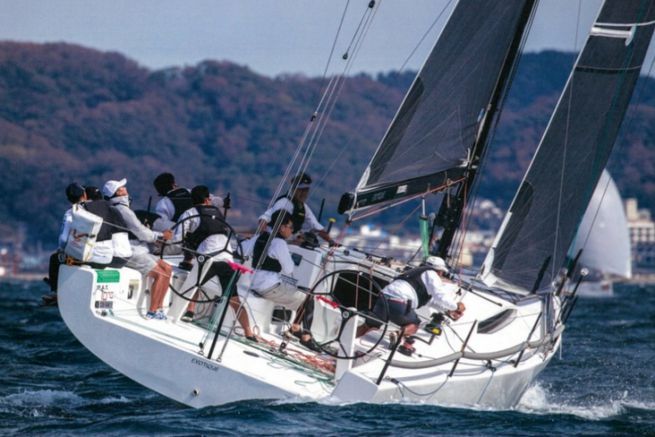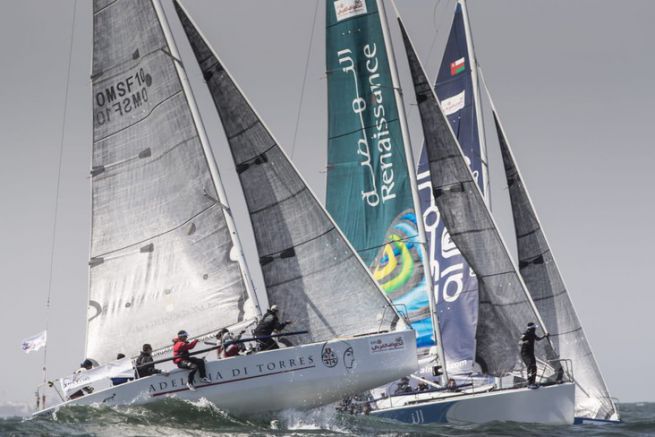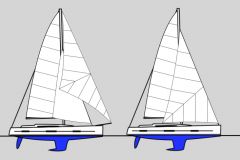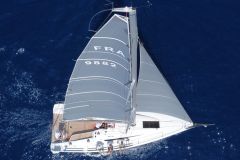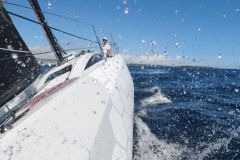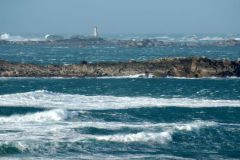Not all boats are created equal. By the way, what is the little temps?? Generally speaking, we can define light weather as conditions where the crew is not on recall.
Sailboats are very different from each other and their performance is often a matter of weight/power ratio. A light, canvas sailboat will always be more comfortable in light winds than in breezy conditions.
However, no matter what your boat is, there are some tips to avoid pulling your hair out when the wind dies down.

Speed first and foremost
This can be counter-intuitive upwind, but in light winds you have to resist the temptation to capsize. As long as the water is not flowing at a good speed around the appendages, they don't work properly and you end up drifting.
So you have to look for speed by focusing on the penons. They should be horizontal, or even close to the stall on the upper surface. You have to observe the pendulums halfway up the sail, and often the best view is when steering downwind.
To make a heel at all costs
The heeling of the boat makes it a little more ardent and pushes it to caper. It is necessary to create heel with all available means, starting with the crew. Crew members must move forward and downwind simultaneously. This is particularly important when exiting the tack for relaunch. By pushing the narrow bow into the water, the wide stern rises and reduces drag.
The weights should also be lowered as much as possible. On larger yachts, the crew will be best placed in the forward cabin. When there's no real action outside, then it's best to take a nap.
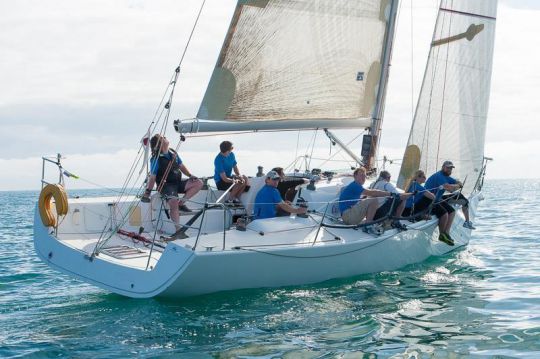
Avoid Zigzags
While it is important to steer with the penons straight, you should not constantly chase them. Indeed, small variations in wind speed (the ripples and softness) will have a very significant impact on the apparent wind angle. If you try to follow the variations absolutely, you risk doing a lot of unnecessary running and even getting lost along the way. Therefore, a moderate attitude should be adopted.
In a ripple, the apparent wind will give way (it will move backwards) and the penons will tell you that you can head. You can, but a better approach is to be moderate. Trim the headsail to keep the pendulums straight and turn the laughing stock into acceleration. Then you can steer gradually, adjusting the sheet as you go. Don't be too gourmand?! If you capsize too fast or too high, the speed will quickly collapse and you will have to start all over again.
In a soft wind, the apparent wind will refuse (it will move forward) the penon intrados will stall and the headsail will begin to faseyer by the leader. Instead of immediately lowering immediately, it pays to be slightly overpowered and then lower slowly. As the boat slows down, the apparent wind will give way and you can shock to the initial configuration. You have to accept slowing down, it's unavoidable if you're in a soft spot. The idea is to minimise the leeward loss by following the apparent wind variations too closely.
By working as a team, the trimmers and helmsman will noticeably limit the zigzags.
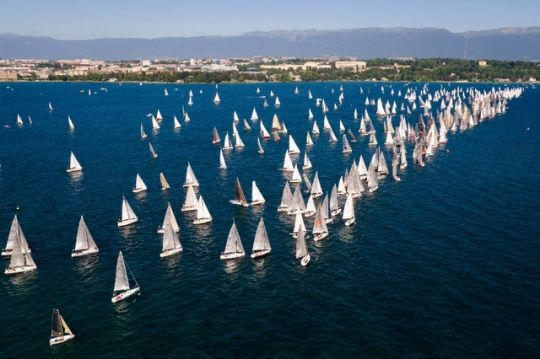
Finding power
Few sailors "dare" to touch the rigging, but there is a lot to be gained, especially in light airs. If you are uncertain, a round of tape around the rigging screw threads will help you to find the "right" setting after the calm.
On modern yachts, with split rigging and pushing spreaders, in light winds you can give the rigging power. To do this, lengthen the forestay (using the rigging screw) and slacken the shrouds. In one-design classes, reference values will be given in trimming guides. For IRC boats, there is no specific guide, but the objectives are the same: to create leeward jib for the forestay and mast to give more power to the sails. Ideally, the forestay should move slightly in small waves.
For boats with head rigging and spreaders in the axis, you will get forestay jib by completely off-setting the backstay, but be careful not to let the rigging slacken too much. On most boats, a bit of extra quest is often beneficial.
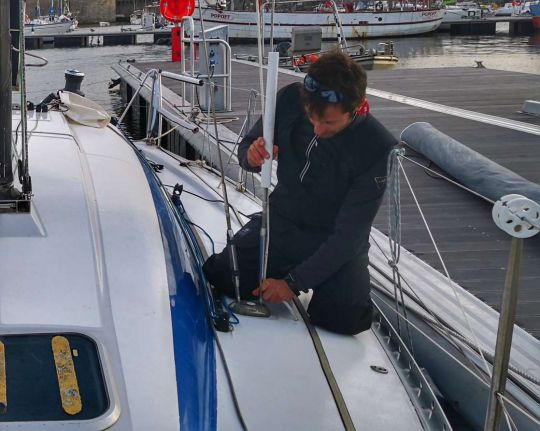

 /
/ 